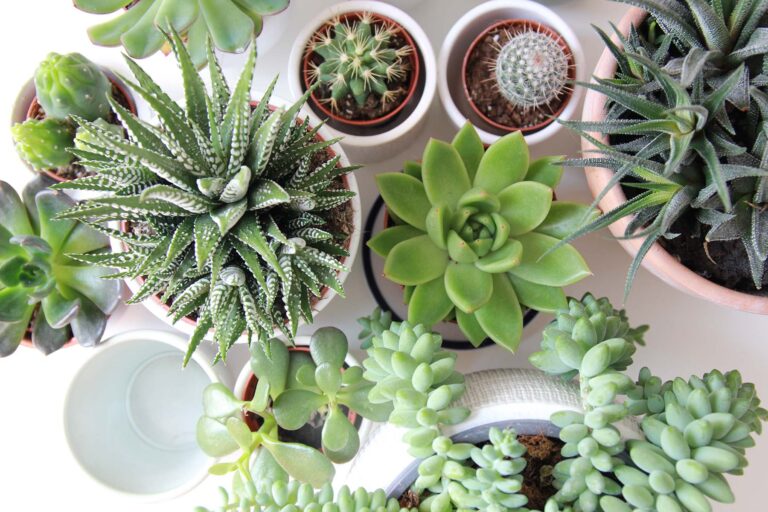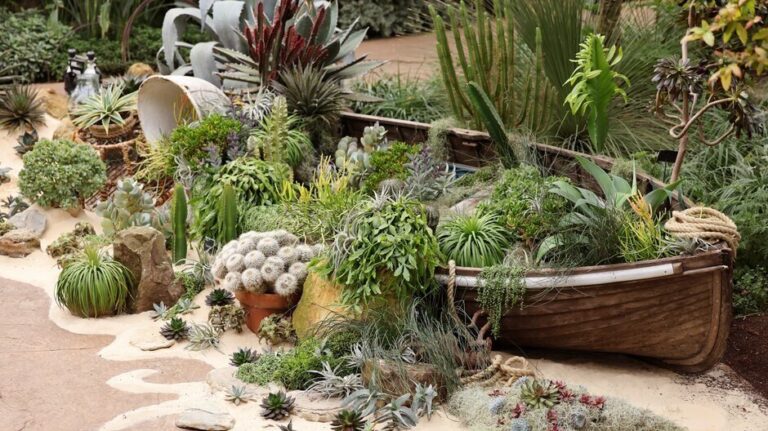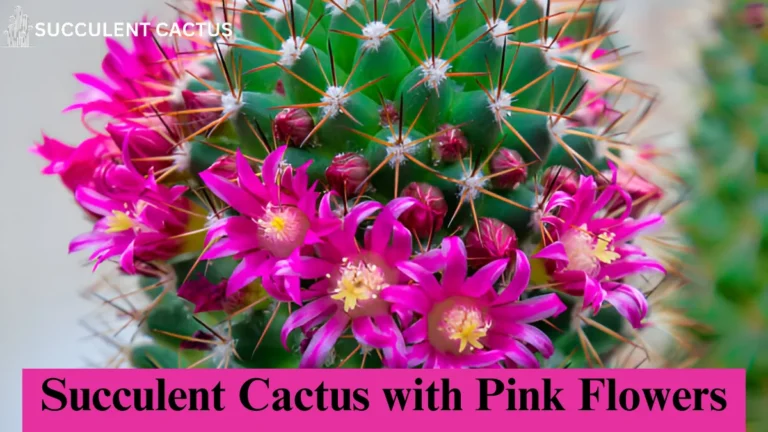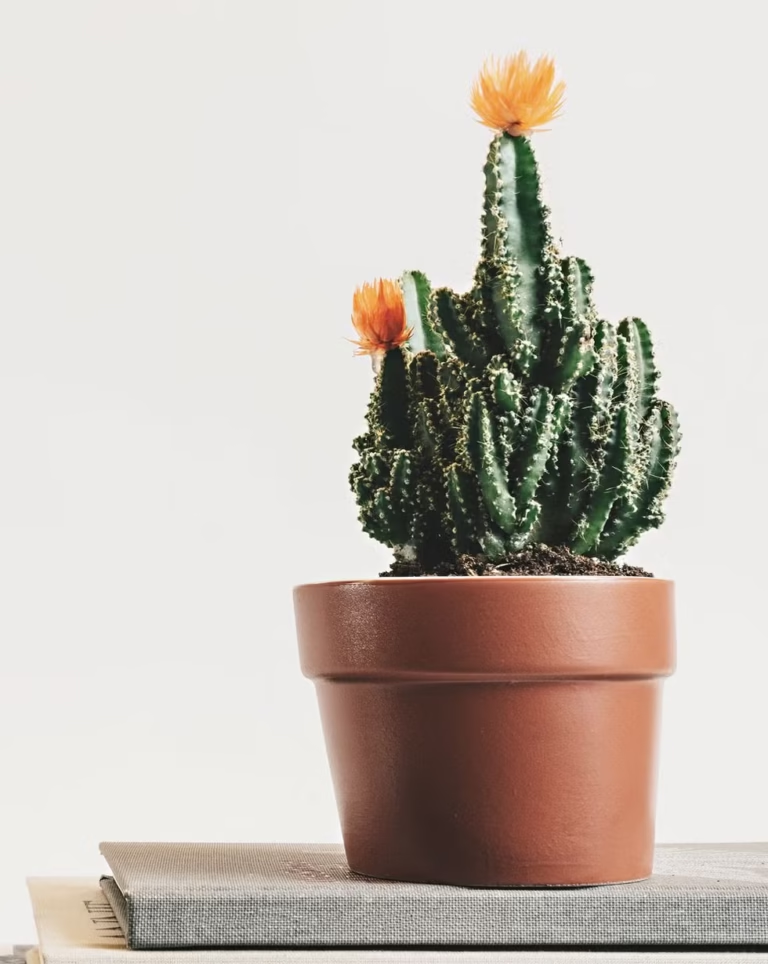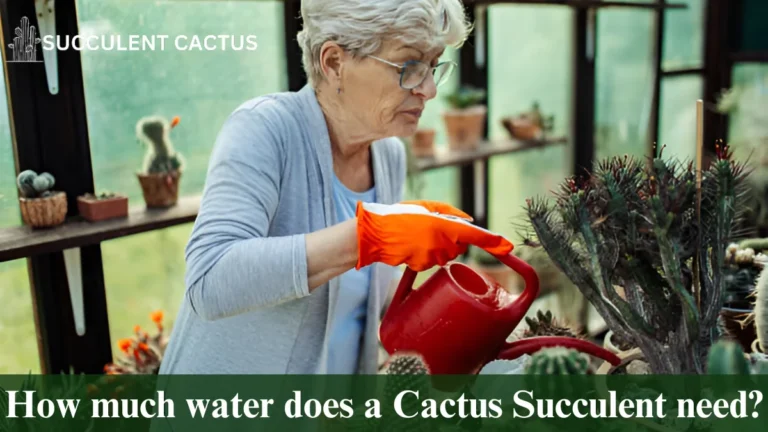Are Succulent Cactus Poisonous to Cats? An In-Depth Guide

Succulent cactus plants have become a popular addition to homes and gardens due to their low maintenance and aesthetic appeal. However, as pet owners, ensuring the safety of your furry companions is a top priority. If you’re asking, “Are succulent cactus poisonous to cats?”, you’re not alone. This comprehensive guide dives into the topic, exploring which succulents are safe, which ones pose a risk, and how to protect your curious feline friends.
Understanding the Nature of Succulents and Cacti
What Are Succulent Cactus Plants?
Succulent cactus plants are a group of plants that have adapted to survive in arid and semi-arid conditions. Their thick, fleshy leaves and stems act as water reservoirs, allowing them to endure prolonged drought periods. These plants belong to different botanical families, with cacti being one of the most recognized subcategories. While all cacti are succulents, not all succulents are cacti.
Succulents come in various shapes, sizes, and colors, offering endless options for both indoor and outdoor gardening. Some are compact, like Haworthia, while others, such as Echeveria, display rosette formations. Cacti, on the other hand, often feature spines or pads, such as Opuntia or Mammillaria. These unique traits make succulents and cacti a favorite for plant enthusiasts.
Additionally, their drought-tolerant nature makes them ideal for busy homeowners or those living in dry climates. However, while they are perfect for human homes, their safety for pets—especially cats—depends on the specific plant type.
Why Cats Are Attracted to Succulents
Cats are known for their curiosity, which often leads them to explore and interact with plants. Succulents can be especially appealing to cats due to their unique texture, scent, and appearance.
- Soft Leaves: Succulents like Echeveria have smooth, fleshy leaves that may seem like a chew toy to cats.
- Bright Colors: Vibrantly colored plants, like Purple Pearl Echeveria, can grab a cat’s attention.
- Sweet Sap: Some succulents excrete a mildly sweet sap, which can entice cats to taste them.
- Movement: Trailing succulents, such as String of Pearls, may sway, stimulating a cat’s natural hunting instincts.
While this curiosity is harmless in many cases, succulent cactus poisonous to cats can result in serious health issues for them.
Overview of Plant Toxicity in Pets
The level of toxicity in plants varies greatly depending on the species, and some succulent cactus poisonous to cats contain chemical compounds that can irritate a cat’s stomach, mouth, or skin. Toxic compounds, such as aloin in Aloe Vera or the milky sap in Euphorbia species, can cause mild to severe symptoms depending on the amount ingested.
Cats are especially vulnerable due to their smaller size and fastidious grooming habits. If they chew a toxic plant, they may ingest harmful compounds by cleaning their fur afterward. Recognizing toxic plants and understanding their effects is crucial for every pet owner. Prevention and proactive care are key to protecting your feline friends.
Identifying Toxic Succulents
Common Toxic Succulents
While many succulents are safe, certain varieties contain harmful compounds that can pose risks to cats.
Examples of Toxic Succulents and Their Effects:
- Aloe Vera: Contains aloin, which can cause gastrointestinal upset in cats. Symptoms include vomiting, diarrhea, and lethargy.
- Euphorbia (e.g., Pencil Cactus): Has a milky sap that irritates the skin and mouth. If ingested, it can cause vomiting and drooling.
- Kalanchoe: Contains cardiac glycosides, leading to gastrointestinal distress and, in severe cases, heart irregularities.
It’s essential to identify and label your plants to avoid accidental exposure. If you’re unsure of a succulent’s identity, consult a botanist or use a plant identification app.
Symptoms of Succulent Poisoning in Cats
If a cat consumes a plant from the succulent cactus poisonous to cats category, symptoms can range from mild irritation to severe health issues. Here are the most common signs to watch for:
- Gastrointestinal Symptoms: Vomiting, diarrhea, and excessive drooling.
- Skin Irritation: If a cat touches the plant’s sap, they may develop redness, itching, or swelling.
- Behavioral Changes: A poisoned cat may become lethargic, disoriented, or irritable.
- Respiratory Distress: In severe cases, toxins can affect breathing or cause swelling in the throat.
Immediate veterinary attention is critical if your cat shows these symptoms. Early treatment can prevent more severe complications.
Real-Life Case Studies
Case Study 1: Bella, a 4-year-old Persian cat, chewed on the leaves of a Jade Plant (Crassula ovata). After vomiting and refusing to eat, her owner took her to the vet, where supportive care helped her recover fully.
Case Study 2: Milo, a tabby cat, ingested a piece of a Kalanchoe plant. Within hours, he exhibited rapid heartbeats and disorientation. Emergency veterinary care, including activated charcoal and IV fluids, saved his life.
These cases highlight the importance of identifying toxic plants and acting quickly in emergencies.
Safe Succulents for Cats
Non-Toxic Succulents
Fortunately, many succulent varieties are safe for cats and can be kept without concern.
Examples of Non-Toxic Succulents:
- Haworthia: Resembling Aloe Vera, this plant is completely safe for pets.
- Echeveria: Popular for its colorful rosettes and ease of care.
- Christmas Cactus (Schlumbergera): A festive choice that’s pet-friendly.
By choosing non-toxic varieties, you can enjoy the beauty of succulents without compromising your cat’s safety.
Benefits of Choosing Safe Succulents
Opting for non-toxic succulents ensures peace of mind and creates a harmonious environment for both plants and pets.
Key Benefits:
- Safety: Your cat can freely explore the house without danger.
- Ease of Maintenance: Many safe succulents are hardy and low-maintenance.
- Aesthetic Appeal: Non-toxic varieties offer stunning shapes, textures, and colors.
For instance, Haworthia fasciata (Zebra Plant) adds a unique visual element to any room while being entirely safe for pets.
Tips for Selecting Cat-Safe Plants
- Always verify a plant’s toxicity status before purchase.
- Use reputable sources like the ASPCA’s online plant database.
- Opt for well-known non-toxic varieties such as Echeveria, Sempervivum, or Haworthia.
By following these guidelines, you can confidently choose plants that are both beautiful and safe for your cat.
Preventing Cats from Chewing on Succulents
Why Cats Chew on Plants
Cats often chew on plants out of curiosity, boredom, or to aid digestion. The texture and taste of succulent leaves might attract them, especially if they’re teething or seeking enrichment.
Reasons Cats Chew on Succulents:
- Exploration: Cats investigate their environment through taste and smell.
- Boredom: A lack of toys or stimulation can lead to destructive chewing.
- Grass Substitute: Indoor cats may chew on succulents as a substitute for grass, which they instinctively consume for fiber or to ease stomach discomfort.
Understanding these motivations can help you deter your cat from targeting your plants.
Effective Deterrents
To protect your succulents and ensure your cat’s safety, use these effective deterrents:
- Bitter Sprays: Pet-safe deterrent sprays with bitter flavors discourage chewing. Apply regularly to your plants for best results.
- Aluminum Foil: Place foil around plant pots—cats dislike the sound and texture.
- Citrus Peels: Scatter lemon or orange peels near plants, as cats dislike citrus scents.
Pro Tip: Rotate deterrents periodically to prevent your cat from becoming accustomed to them.
Training Your Cat to Avoid Plants
Training your cat to respect boundaries is an effective long-term solution.
Steps to Train Your Cat:
- Positive Reinforcement: Reward your cat with treats or praise when they avoid plants.
- Provide Alternatives: Offer cat grass or chew toys as a substitute for plants.
- Use Commands: Teach basic commands like “no” or “leave it” using consistent verbal cues.
Training requires patience but ensures a safer environment for both your cat and your plants.
Creating a Cat-Friendly Succulent Display
Designing a Safe Indoor Garden
Designing a cat-safe garden involves strategic planning and plant placement.
Tips for a Cat-Friendly Display:
- Place non-toxic succulents at accessible levels.
- Use elevated shelves or hanging planters for toxic plants.
- Ensure stable pots to prevent accidental tipping.
A tiered plant stand can showcase your succulents beautifully while keeping harmful plants out of reach.
Incorporating Cat Grass
Cat grass is an excellent addition to your home garden and provides a healthy distraction for your feline.
Benefits of Cat Grass:
- Aids digestion.
- Reduces the urge to chew on other plants.
- Adds greenery to your space.
Place cat grass near your succulents to redirect your cat’s attention. Rotate fresh batches regularly to maintain interest.
Using Barriers to Protect Plants
Barriers can effectively protect succulents from curious cats.
Barrier Ideas:
- Terrariums: Enclose small succulents in glass terrariums.
- Mesh Covers: Use breathable mesh covers for pots.
- Furniture Placement: Position plants behind furniture or on cat-proof shelves.
Physical barriers ensure plants remain intact while adding decorative elements to your home.
Immediate Steps if Your Cat Ingests a Toxic Succulent
Recognizing Signs of Poisoning
Knowing the symptoms of plant poisoning helps you act quickly in emergencies.
Symptoms of Succulent Poisoning in Cats:
- Excessive drooling.
- Vomiting or diarrhea.
- Loss of appetite.
- Tremors or seizures in severe cases.
Monitor your cat closely and act promptly if you notice any of these signs.
First Aid Measures
If you suspect your cat has ingested a toxic plant, follow these first-aid steps:
- Remove Access: Prevent further exposure by moving the plant out of reach.
- Check the Mouth: Gently inspect your cat’s mouth for plant debris and remove it carefully.
- Contact a Veterinarian: Provide detailed information about the plant and its symptoms.
Pro Tip: Keep the plant label or take a photo of it to show your vet.
When to Seek Veterinary Help
Always seek veterinary assistance if your cat shows severe or prolonged symptoms.
Veterinary Treatment Options:
- Induced vomiting (only under veterinary supervision).
- Activated charcoal to bind toxins.
- IV fluids for hydration and toxin flushing.
Prompt medical attention can make a critical difference in your cat’s recovery.
Common Myths About Succulents and Cats
Myth: All Succulents Are Toxic to Cats
Not all succulents are harmful. Many popular varieties, such as Echeveria and Haworthia, are completely safe for pets.
Fact: The level of toxicity depends on the plant species. Always research individual plants before introducing them to your home.
Myth: Cats Instinctively Avoid Toxic Plants
It’s a common misconception that cats can sense toxicity. While some may naturally avoid harmful plants, others may chew on them out of curiosity.
Fact: Cats cannot distinguish toxic from non-toxic plants.
Myth: Only Indoor Cats Are at Risk
Outdoor cats are equally at risk, as they may encounter toxic plants in gardens or landscapes.
Fact: Toxic plants can pose a threat to all cats, regardless of their living environment.
Popular Cat-Safe Succulent Alternatives
Echeveria Varieties
Echeveria species are colorful, pet-friendly, and easy to care for, making them ideal for households with cats.
Popular Varieties:
- Echeveria ‘Lola’: A pale purple rosette.
- Echeveria ‘Perle von Nurnberg’: Features stunning pastel hues.
Zebra Plant (Haworthia)
The Haworthia is a hardy, compact succulent with white stripes resembling a zebra pattern.
Why It’s Safe:
- Non-toxic to pets.
- Thrives in indirect sunlight and low-water conditions.
Christmas Cactus
The Christmas Cactus blooms during the holiday season and is entirely safe for pets.
Key Features:
- Produces vibrant flowers in winter.
- Easy to grow in a variety of conditions.
Choosing Pet-Safe Potting Soil
Ingredients to Avoid
Some potting soils contain harmful additives like chemical fertilizers or pesticides. These can be dangerous if ingested by pets.
Harmful Ingredients to Watch For:
- Synthetic fertilizers.
- Pest control granules.
Opt for organic, pet-safe potting mixes to minimize risks.
DIY Cat-Friendly Potting Mix
Creating your potting soil ensures safety and quality.
DIY Recipe:
- Equal parts cactus soil mix and perlite.
- Add sand for better drainage.
Benefits of Proper Potting Mix
Using the right potting soil promotes plant health and reduces the likelihood of overwatering, which can lead to mold—a potential irritant for pets.
Balancing Succulent Care and Cat Safety
Establishing a Safe Care Routine
Balancing your succulent care routine with cat safety involves thoughtful planning and consistent effort.
Safe Care Practices:
- Monitor Watering: Avoid overwatering your succulents, as stagnant water can attract your cat’s curiosity.
- Secure Pots: Ensure that pots are stable and cannot be easily knocked over.
- Limit Access: Use decorative barriers or place plants in elevated areas out of your cat’s reach.
By prioritizing both your plants’ health and your cat’s safety, you can maintain a harmonious home environment.
Handling Succulents in a Cat Household
Proper handling of succulents minimizes the risk of accidental exposure to toxins.
Handling Tips:
- Wash your hands after handling poisonous plants, as succulent cactus poisonous to cats can transfer harmful sap that might pose a risk to your feline friends.
- Avoid leaving trimmed plant parts within reach of pets.
- Use gloves when repotting toxic succulents to reduce the risk of sap exposure.
Ensuring Consistency
Consistency in care routines ensures your plants thrive while keeping your feline safe. For instance, train yourself to inspect your succulents and cat-proof setups weekly to ensure everything remains in order.
Cat-Proofing Your Home for Succulents
Strategic Plant Placement
Positioning your plants thoughtfully is one of the simplest ways to protect both your succulents and your cat.
Best Placement Ideas:
- Wall-Mounted Shelves: Keep plants away from climbing cats.
- Hanging Baskets: Use ceiling hooks to suspend plants out of reach.
- Closed Terrariums: Encase small succulents in glass terrariums to deter cats from touching or chewing them.
Using Natural Cat Deterrents
Natural repellents are an excellent way to discourage your cat from approaching certain areas.
Effective Natural Deterrents:
- Essential Oils: Scents like lavender or eucalyptus can repel cats (ensure they are not used in areas where cats can ingest them).
- Vinegar Spray: Dilute vinegar with water and spray near plants to deter cats.
- Herbal Barriers: Grow cat-safe herbs like rosemary, which cats dislike, near succulent displays.
Incorporating Cat-Specific Zones
Designate specific areas for your cat to explore, reducing their temptation to interfere with your succulents.
Cat Zones:
- Install a cat tree near a window to offer alternative stimulation.
- Provide a patch of cat grass or a scratch post to redirect your cat’s energy.
Long-Term Solutions for Succulent and Cat Coexistence
Investing in Pet-Safe Succulents
Long-term solutions start with selecting pet-safe succulents to minimize risk and worry.
Top Pet-Safe Options:
- Graptopetalum: Features rosettes of colorful, fleshy leaves.
- Hens and Chicks (Sempervivum): A versatile, non-toxic succulent.
- String of Pearls (Senecio): A cascading succulent ideal for hanging baskets.
Building a Succulent Care Schedule
Consistency in succulent care ensures plant health and safety for your cat.
Care Schedule:
- Weekly: Water and inspect for pests.
- Monthly: Prune dead leaves and clean pots.
- Quarterly: Check soil condition and repot as needed.
Educating Others in the Household
Ensure everyone in your household is aware of the potential risks associated with succulents and cats.
Tips for Family Education:
- Share lists of toxic and non-toxic succulents.
- Teach children to avoid touching or feeding plants to pets.
- Create a shared plant care and cat safety checklist.
FAQs: Most Asked Questions About Succulents and Cats
Are Succulent Cactus Poisonous to Cats? No, not all succulent cactus are poisonous to cats. While certain species, such as Jade Plant and Aloe Vera, pose risks, many varieties like Haworthia and Echeveria are completely safe. Always research individual plants before bringing them into your home.
How can I tell if my cat has eaten a toxic/poisonous succulent cactus? Symptoms of succulent poisoning include vomiting, diarrhea, drooling, lethargy, and in severe cases, tremors. If you suspect poisoning, contact your veterinarian immediately and bring a sample or photo of the plant.
What is some pet-safe alternatives to succulents? Pet-safe plants include cat grass, Spider Plants, Boston Ferns, and Christmas Cactus. These plants add greenery to your home without posing risks to your cat’s health.
How do I stop my cat from chewing on plants? To deter your cat, use natural repellents like citrus peels or vinegar sprays, provide chew toys or cat grass as alternatives, and consider training your cat with positive reinforcement.
Can I use artificial succulents as a safe alternative? Yes, artificial succulents can provide the aesthetic appeal of real plants without any risk to your cat. Choose high-quality options that closely mimic the appearance of live plants for a realistic effect.
Conclusion
Succulent cactus plants and cats can coexist peacefully with a bit of planning and effort. Understanding are succulent cactus poisonous to cats, employing effective deterrents, and creating cat-friendly environments are key steps to ensuring the safety of your feline friends while maintaining a thriving succulent collection. By incorporating cat-safe succulents, using barriers, and monitoring your pet’s behavior, you can achieve a harmonious balance. Remember, the health and safety of your cat should always come first, so take the necessary precautions and enjoy the beauty of succulents without worry.
With these strategies in mind, you can create a safe and stylish home that both you and your cat will love!

